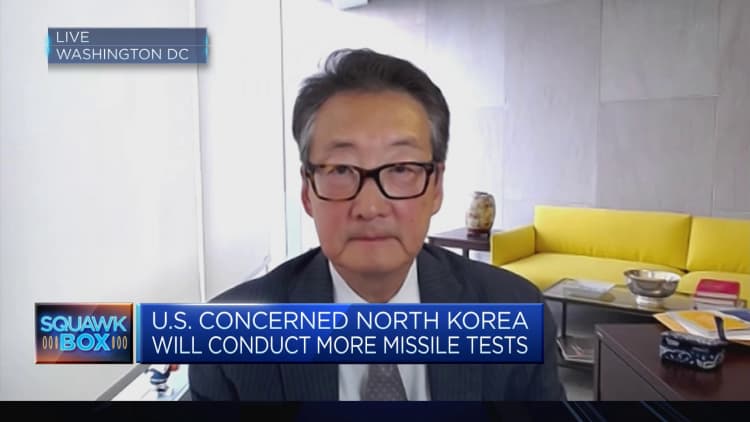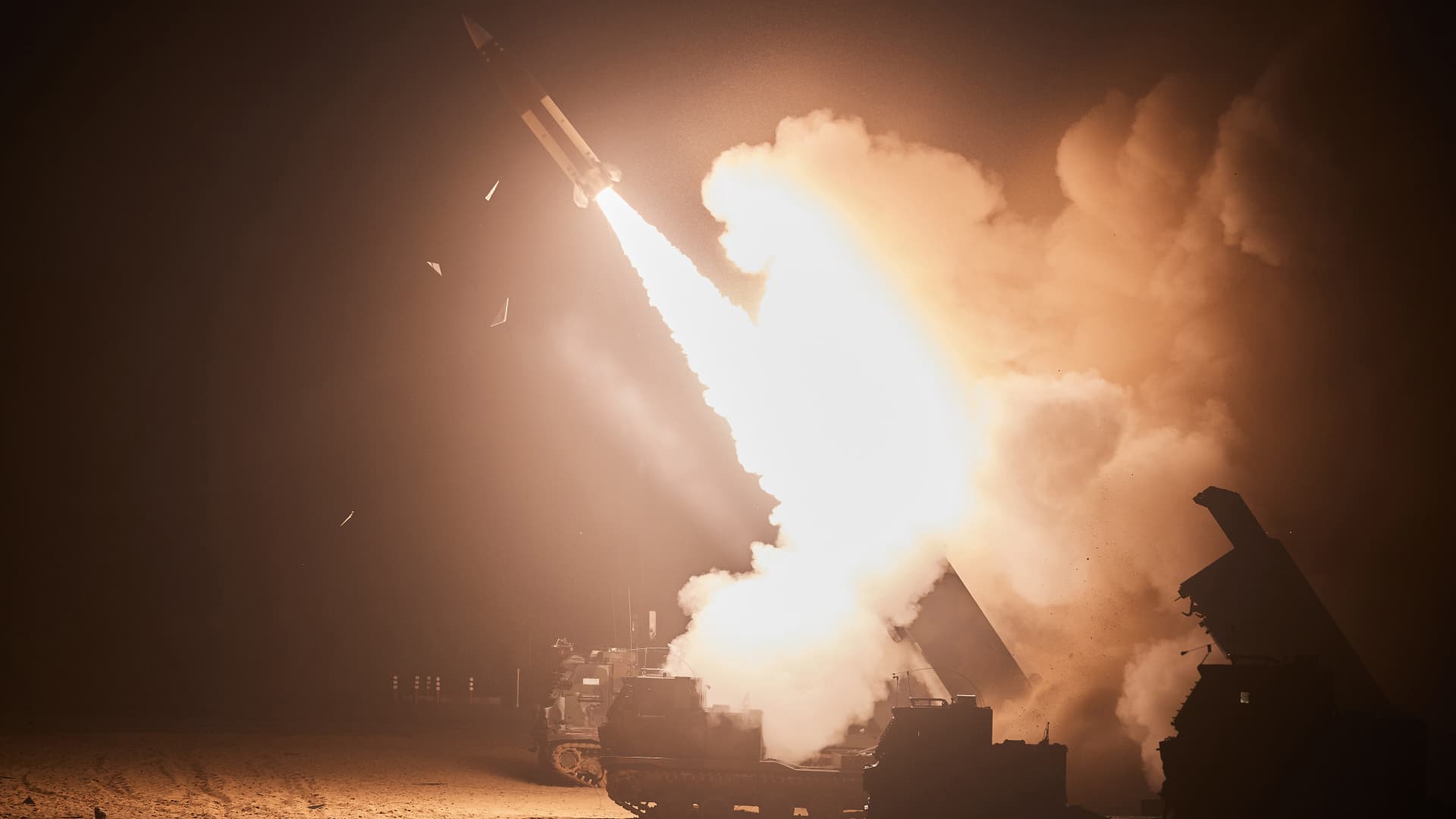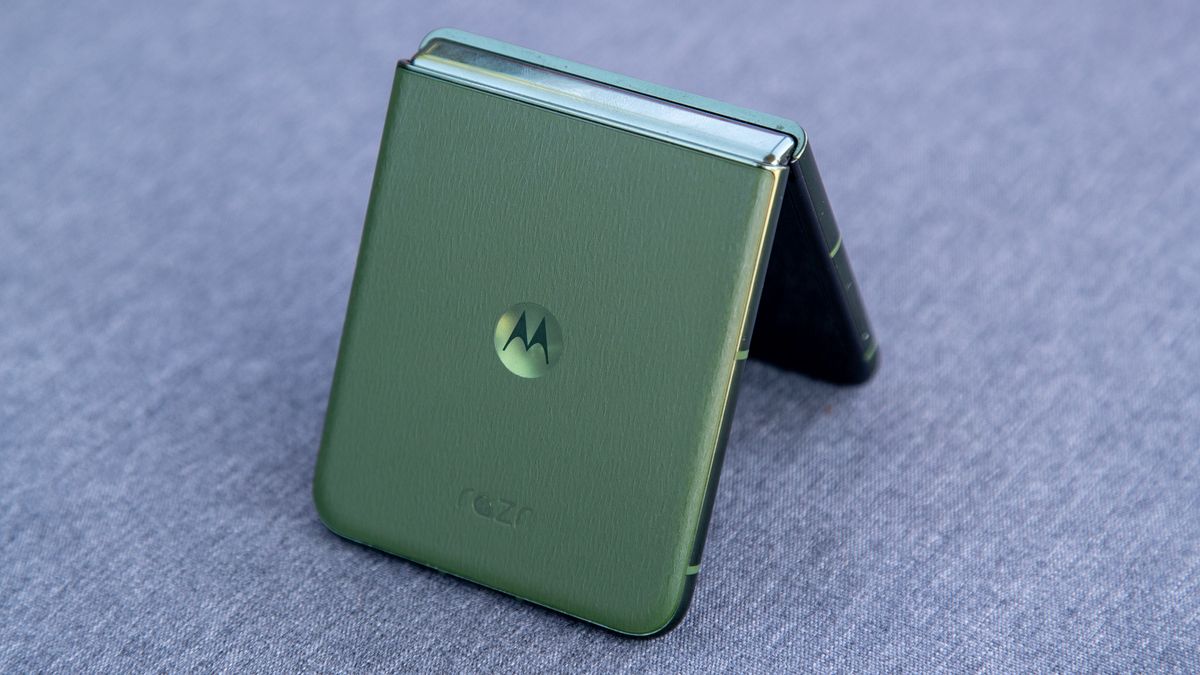In this handout image released by the South Korean Defense Ministry via Dong-A Daily, a missile is fired during a joint training between the United States and South Korea on June 6, 2022 in East Coast, South Korea.
South Korean Defense Ministry | Getty Images
South Korean defense stocks have recorded stellar gains over the past 12 months, with one stock soaring more than 60% as tensions on the Korean Peninsula accelerate.
Demand for arms — spurred partially by Russia’s invasion of Ukraine — has also propelled military spending, with global military spending worldwide increasing since 2018 to reach $2.1 trillion as of 2021, according to SIPRI Arms Transfer Database.
Shares of Hanhwa Aerospace, a subsidiary of South Korean conglomerate Hanhwa Group, saw a whopping 66% rise since the start of the year, and a nearly 90% surge in the last 12 months.
The company manufactures air defense systems, armored fighting vehicles and artillery systems.
South Korea has benefited from increased global military expenditure, according to Morgan Stanley analysts, citing SIPRI, or Stockholm International Peace Research Institute.
The U.S. investment bank also noted South Korea is now among the top 10 defense export countries in the world.
Escalating tensions in the Korean Peninsula have also kept interest in South Korean weapon platforms high. Some of those systems have found their way into markets like the Middle East and Europe, the latter as a result of the Ukraine war.
Growing weapons demand
According to Morgan Stanley, South Korea has become a major exporter of military and defense equipment and supplies, with 2022 exports totaling 22.9 trillion South Korean won ($17.9 billion). That’s more than double the figure of 9.5 trillion won in 2021.
“Rising demand from Europe and Asia for Korean manufacturers to provide military/defense equipment, including tanks, artillery, and airplanes, are pushing up export volumes,” said bank’s second half outlook investment report on South Korea.
Some notable weapons systems out from South Korea’s defense industry include the K9 Thunder self-propelled howitzer from Hanhwa, the K2 main battle tank from Hyundai Rotem, and the FA-50 light attack aircraft, manufactured by Korea Aerospace Industries.
In a bid to replace arms donated to Ukraine in the Russia-Ukraine war, Poland placed an order for 672 K9 units for $2.4 billion in July 2022, along with 1,000 South Korean K2 main battle tanks for $3.34 billion, according to SIPRI.
At the signing ceremony, Poland’s Minister of National Defense Mariusz Blaszczak said: “We want peace, so we must prepare for war. The Polish armed forces should be so strong that an aggressor cannot decide to attack.”
Poland has also signed additional deals for 48 of FA-50 light attack aircraft, as well as 288 multiple launch rocket systems in October.

The procurement of the K2 tank is “surprising” as it marks a new entrant into the European arms market, according to Nikkei, which reported that Poland’s move was only the second major arms procurement by a NATO member from a supplier outside the bloc.
NATO forces generally use a similar roster of equipment to maximize interoperability. For example, the mainstay of NATO tank forces is the German Leopard 2, manufactured by Krauss-Maffei Wegmann.
The K2s are manufactured by South Korean heavy industry company Hyundai Rotem. The company’s shares have risen 6% year-to-date, and gained 20% in the last 12 months.
Separately, the FA-50 aircraft are manufactured by Korea Aerospace Industries. Besides the Poland contract, Malaysia also placed a $920 million order in February for 18 FA-50s, according to defence intelligence company Janes.
Shares of Korea Aerospace Industries gained as much as 17% compared to the start of the year, but have since fallen to a year-to-date loss of about 4%.
The stock is lower this year as a result of first quarter results that disappointed, said Samsung Securities analysts Youngsoo Han and Kayoung Lee in a May 9 report. The company saw delays to its domestic aircraft shipments related to exports to Poland as well as its Iraqi reconstruction project.
However, the analysts expect these sales to be recognized in the second half of the year, which will power most of KAI’s 2023 earnings.
“We see few reasons to cut our 2023 earnings estimate for the firm,” they added, noting the long-term growth scenario for KAI is still “valid.”
The Samsung Securities analysts also cited steady growth in T-50 related sales. (The KA-50 is a variant of the T-50 aircraft).
Tech and industrial base
Morgan Stanley is optimistic about the outlook for the South Korean defense industry.
There are secular growth opportunities for “chip-makers, EV value chain, defense and energy enablers” over the course of 2023, the investment bank said in its report.
That view is shared by Victor Cha, senior vice president for Asia and Korea Chair at the Center for Strategic and International Studies.
Speaking to CNBC, Cha explained that South Korea, under the current administration of President Yoon Suk-yeol, has “made it very clear” that they want to be a major arms exporter around the world.
Cha says South Korea has a very strong industrial and tech base, and these combine to provide for a very strong defense industrial capability.
“Most of this is not super high-end military equipment, but it’s very good conventional military equipment and vehicles,” Cha also said South Korea’s defense industry is seeking to expand into other areas like drones, as well as unmanned aerial and undersea vehicles.
“They’ll be very good at this sort of stuff, whether it’s on their own or in combination with a U.S. defense company.”





















Discussion about this post